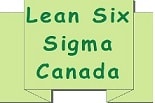“The Toyota Way”, by the international best-seller author Jeff Liker, is now in second edition.

Here is a Summary of “The Toyota Way” 1st edition – 14 Management Principles
Principle 1: Base Your Decisions on a Long-Term Philosophy
This principle is the foundation of all subsequent principles. Think long term, even at the expense of short-term financial goals. Generate value for the customer and society.
Principle 2: Create Continuous Flow
Eliminate waste (muda). By creating continuous process flow you can bring problems to the surface.
Principle 3: Use Pull Systems to Avoid Overproduction.
Minimize inventory and give customers what they want, when they want it, and the amount they want. Use pull systems that signal what subsequent operation needs.
Principle 4: Level Out the Workload – Heijunka
Balance the use of both labour and machines. Work like a tortoise, not like a hare. Minimize waste (muda), do not overburden people or equipment (muri), and do not create uneven production levels (mura).
Principle 5: Stop and Fix the Problem
Get quality right the first time. Build a culture where people are empowered to stop production to address quality problems.
Principle 6: Use Standardized Work
Everyone should do the same task the same way. Standardization is the foundation of continuous improvement (Kaizen) and employees’ empowerment.
Principle 7: Make Problems Visual
Implement 5S (sort, set in order, shine, standardize and sustain) and use visual controls, so that no problems are hidden.
Principle 8: Use Only Reliable Tested Technology
Use technology to support people, not to replace them. Technology should be pulled as needed, not pushed.
Principle 9: Grow Your Leaders Internally
Everyone is trained and educated. Grow leaders who understand the daily work and live the philosophy.
Principle 10: Develop and Promote Teamwork
Success is based on the team, not the individual.
Principle 11: Respect Your Partners and Help Them Improve
The focus should be on long term partnership. Work in cross-functional teams with your suppliers to address and solve problems.
Principle 12: Go and See for Yourself (Genchi Genbutsu)
You cannot really have a thorough understanding of the situation, unless you experience the situation firsthand. You must go to the Gemba and see for yourself.
Principle 13: Make Decisions Slowly by Consensus and Implement Rapidly (Nemawashi)
Consider all alternatives, go to Gemba and work in teams. Once consensus has been reached, act fast.
Principle 14: Use Hansei (Reflection) and Continuous Improvement (Kaizen) to become a Learning Organization
Encourage people to participate, share their ideas and use problem solving techniques.
.
Read a detailed and professionally done interview about The Toyota Way 2nd edition by INFOQ.
